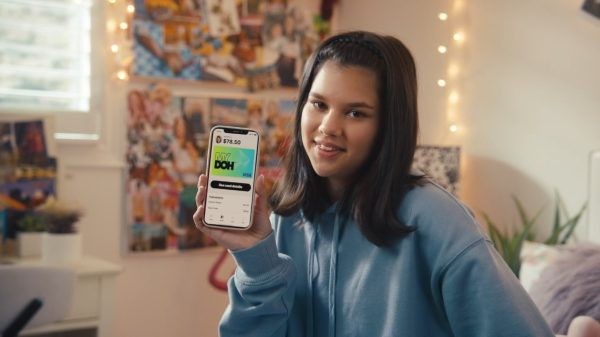This story appears in the January/February 2020 issue of strategy.
As one decade comes to an end, it’s time to look ahead to the next.
In its 2030 Global Consumer Trends report, Mintel examined data through the lens of three forces: (1) the world’s aging population, (2) the rise of the middle class, (3) and the speed and pull of urbanization, says Gabrielle Lieberman, director of trends and social media research. Together, these themes underpin developments across seven drivers of change over the next ten years. Strategy paints a picture of what that looks like.
WELLBEING
In 2020 and beyond, beauty and personal care products move away from improving or changing appearance and toward internal and external wellbeing. Alcohol consumption continues to fall among young people, as they begin to favour alternatives (such as mocktails and functional beverages) that support their desire to “clean up” aspects of their lives, says Lieberman. Red meat also moves “from mainstream to luxury to taboo,” as consumers grow more concerned about its health and environmental implications. “But you [won’t] see mainstream, full-vegan diets,” Lieberman says. At-home DNA testing kits, which are prohibitively expensive, will become more accessible, enabling brands to drive personalization at scale. Already available in Europe, “blood-based solutions” across the beauty, food, drink and personal care categories emerge, giving customers the benefits of personalized products tailored to their genetic makeup. “It’s a way of adding a little bit of [me] into an existing product,” Lieberman says. “It’s how brands can be creative with personalized solutions that are actually sustainable for [their business].”
SURROUNDINGS
This driver concerns the external environment and its impact on consumers. “We’re seeing a lot of re-wilding of urban spaces, modular and moveable homes,” Lieberman says, and over the next decade, its influence is felt on categories such as home furnishings. Brands that offer returnable products on a subscription basis, like home-grown Pivot Furniture, could benefit; so too will established companies, like IKEA, that design products more fitting for micro-homes. Looking ahead to 2030, the pull of urbanization transforms open spaces and the city sphere, as consumers use publicly owned and shared spaces to relax, unwind and disconnect from technology. As a result, pop-up commerce gains traction and shopping spaces “become multi-sensory, social sanctuaries,” according to Mintel, contributing to the drive away from passive shopping experiences toward experiential retail. At the same time, more “like-minded interest groups form globally via the internet,” which counterintuitively contributes to social isolation. “There’s a lot of change and disruption and social turmoil that is happening in the world right now, and we do find that when that happens… people get with their like-minded people,” Lieberman says. According to the World Health Organization, loneliness is on track to reach “epidemic” proportions.
TECHNOLOGY
As the population ages, and the older gen delays retirement, brands continue to develop technologies that meet their needs. In 2020, the senior segment begins to better understand the conveniences offered by voice and home assistants that offer more independence. From now through 2030, large retailers adopt 5G technology, transforming consumer expectations and leaving small mom-and-pop shops that cannot afford to transition behind. 5G is likened to the Amazon effect – which forever changed customers’ view of delivery and product availability – setting a new bar that every big and small retailer will look to match, Lieberman says. Mintel says consumers wanting human interaction may also revolt against increasingly cashless and frictionless systems, which could result in discount and convenience stores being the only acceptable places for unmanned retail operations – humans will continue to staff everything else.
RIGHTS
“Cancel culture” and “call-out culture” have emerged as consumers begin to feel more empowered to stand up against companies and leaders they don’t agree with. This will continue into 2020. But, over the next ten years, Lieberman says the research suggests there will be a “pushback to the pushback,” as consumers tire of the cycle of reactive discourse. Expect the pendulum to swing the other way in the early 2020s. “The discourse will become a little more thoughtful,” she says, but that doesn’t mean brands will be able to “kick up [their] feet and not worry about it.” As for privacy, personal data exchanges and online trading platforms become more popular, giving consumers control of how their information is collected, stored and sold. “When we ask, especially younger consumers, about privacy and data, it’s a lot of, ‘Oh, yeah, that’s just the way it is,’” notes Lieberman. “But we’re also simultaneously starting to see them say, ‘Wait a minute, can I get something in return for that?’”
IDENTITY
Over the next year, teens and young adults continue to challenge traditional notions of gender and sexual identity. A greater number are identifying themselves with labels such as transgender or gender-fluid – a change that is expected to accelerate between now and 2030 – and calling into question traditional gender-based marketing (see p. 10). The power of Gen Z as a segment still tends to get dismissed, Lieberman says, because the cohort remains fairly small in pure numbers. But they are growing in influence every day. “We do caution: don’t ignore them, because they are a vocal group.” The impact will be most immediately felt in fashion and beauty, but other categories such as food will not be spared, according to the analyst.
VALUE
Consumer perception of value re-centers around sustainability, as the trend moves toward “slower, minimal consumerism that emphasizes durability, protection and functionality,” says Mintel. Lieberman adds that Gen Z is willing to spend more on products that will last longer and have less environmental impact. “Fast-fashion is something that will absolutely fall out of favour – we’re seeing that now – and will be replaced by not only higher, luxury retailers, but also the second-hand economy. It’s interesting that those two are growing simultaneously, but if you see how they’re connected, and the common thread about impact on the environment and sustainability, it makes sense,” she says. In the future, more brands prioritize people and the planet over profitability, and consumers place greater emphasis on the emotional, rather than functional benefits, of their purchases, says Mintel.
EXPERIENCES
Technology drives a lot of experiences, infiltrating everything from leisure to retail. But as people become more connected, they’re also looking to interact with brands offline. This places nostalgia at the forefront, with the focus returning to older traditions and celebrations that bring people together. The desire for something shared helps fight against loneliness and isolation, Lieberman says. Collective experiences will become more popular in the future, “but there’s also this desire for the nothing experience, this desire to disconnect.” The experience pillar also sees e-sports “rise to the top as one of the most lucrative entertainment markets, with competitiveness being the core driver,” according to Mintel. The movement will precipitate, Lieberman says, thanks to 5G’s ability to solve connectivity issues and make multiplayer options more accessible on mobile. “Sometimes, when you think of gaming, you have that old, tired notion of boy in the basement playing by himself – but this is not what this is. It’s becoming a much more collaborative and a much more social experience than ever before.”
Photo by Lucrezia Carnelos on Unsplash
























